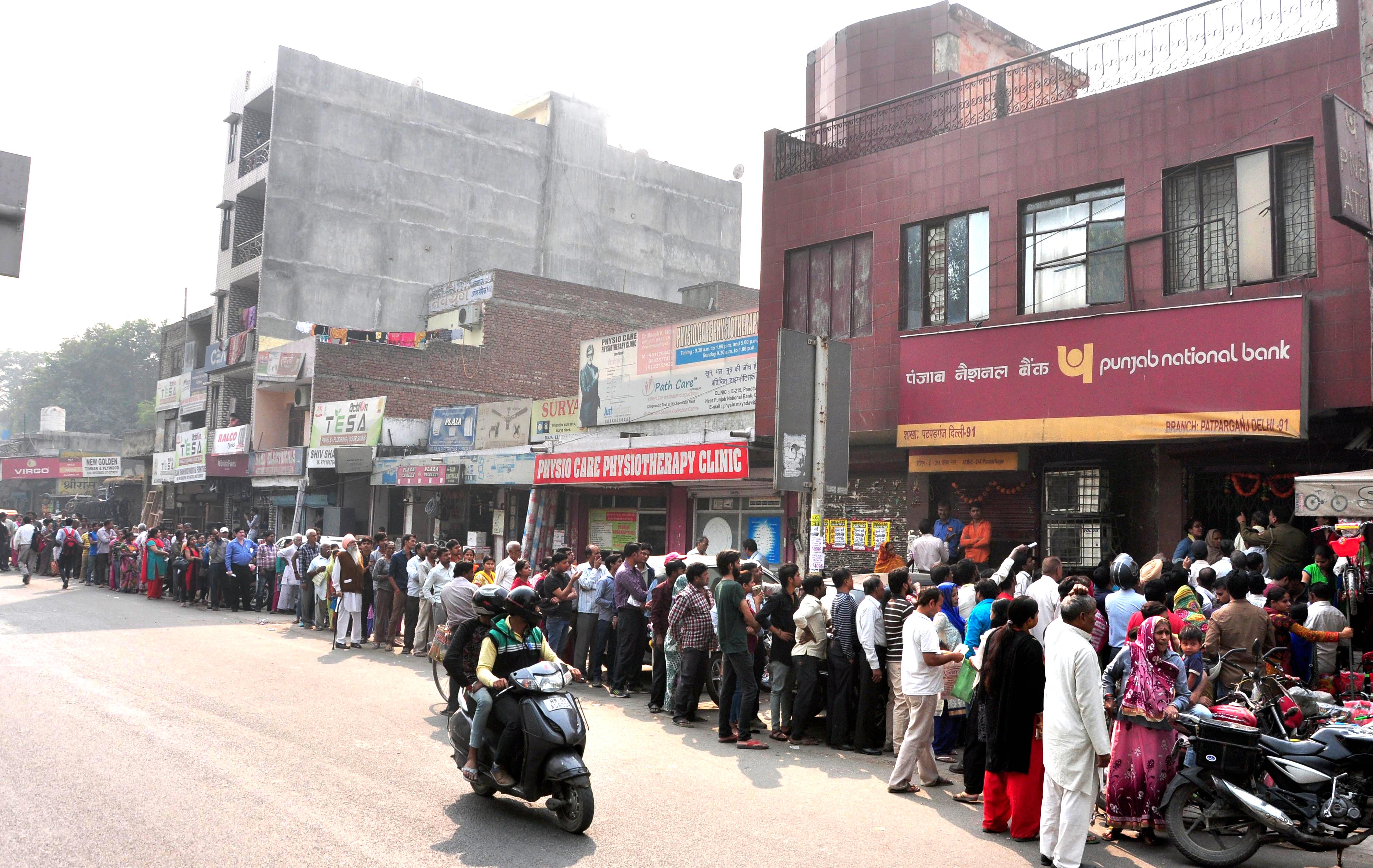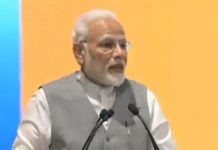
Six year later, as the opposition parties flay demonetisation as ‘economic genocide’ and ‘criminal act of organised loot’, the Supreme Court too has indicated that it is taking the matter seriously after it agreed to review Centre’s 2016 decision of demonetisation after several petitions were filed in this regards. A report by Mudit Mathur
The nation has failed to get an answer from Narendra Modi government over why and how had it taken the decision to demonetise Rs 500 and 1,000 currency notes even after six years? The evasive response of the government irked five-judge constitution bench of the Supreme Court, which is examining constitutional challenges to the way entire demonetisation exercise was accomplished. Six year later, the opposition parties recall demonetisation as ‘economic genocide’ and ‘criminal act of organised loot.’
The abrupt announcement of Prime Minister Narendra Modi on November 8, 2016 at 8 pm unleashed terrible miseries on the people across the country and unimaginable damage to economy of the nation ruining trade and commerce resulting in mass unemployment. The ill-fated decision was aimed to promote digital payments and curb black money, besides eliminating terror funding. “The aftershock of demonetisation continues to weaken economic growth and prosperity of the nation. The country is heading for an economic slowdown,” as predicted by many global rating and monitoring agencies.
Congress president Mallikarjun Kharge while criticizing the NDA government, said, “Demonetisation was promised to free the country of black money. But it destroyed businesses and ruined jobs… 6 years after the ‘masterstroke’, the cash available in public is 72% higher than that in 2016. PM is yet to acknowledge this epic failure that led to the fall of economy.” In a tweet, Kharge said: “Six years of ‘organised loot and legalised plunder’. Tribute to those 150 people who lost their lives due to demonetisation disaster. As we observe 6 years of this epic failure, it is important to remind the PM about the ill-conceived calamity which he thrust upon the nation.”
In a tweet, former Congress chief Rahul Gandhi also hit out at Modi over the decision. “Demonetisation was a deliberate move by ‘PayPM’ to ensure that 2-3 of his billionaire friends monopolise India’s economy by finishing small and medium businesses.”
Trinamool Congress (TMC) spokesperson and the leader of the party in the Rajya Sabha, Derek O’Brien said the move was a “gimmick.” In a tweet, he said: “Six years ago, today. A gimmick that turned out to be an economic genocide demonetisation. Wrote about this in my book in 2017 #InsideParliament.” O’Brien also pointed out that West Bengal Chief Minister and TMC supremo Mamata Banerjee had called for the withdrawal of the decision.
Communist Party of India (Marxist) general secretary Sitaram Yechury in a tweet indicted the government of “beating its own drum on the criminal act of demonetisation, against all good sense, evidence and advice.” “The sixth anniversary of Modi and his govt’s hubris, killing off the Indian economy. Demonetisation has resulted in chaos apart from a record high of cash in circulation. 30.88 lakh crore! The worst jumla of all – ‘This suffering is only for 50 days’,” Yechury further added.
Addressing a press conference at the All India Congress Committee headquarters in Delhi, party spokesperson Gourav Vallabh called demonetisation “Independent India’s greatest organised loot.” Calling it the death anniversary of the Indian economy, the Congress party tried to corner the government. “I implore Modi ji to come on TV at 8 pm tonight. We want you to tell us what you’ve achieved through demonetisation and tell the nation if you consider this your epic failure,” Vallabh said.
“Modi ji, so what have we achieved through demonetisation? Only a few things, the highest unemployment, finishing the MSME sector forever, and finishing the unorganised sector forever. You had promised that black money would come out, but actually, poverty crept into India,” Vallabh remarked.
The Congress spokesperson asked whether the Rs 2,000 notes issued after demonetisation have been useful to Indian citizens? “The number of Rs 2,000 bank notes currently in circulation has declined to 21.4 million at a value of Rs.4.28 lakh crore. But, where are these notes Modi ji? I have not seen these notes in the past three years,” he asked, citing Reserve Bank’s report.
Citing recent presentation given by India before Counter-Terrorism Committee (CTC) of United Nations Security Council’s (UNSC), Prof Vallabh said, “There had been a significant increase in cross-border terror activities in Jammu & Kashmir since 2021-end.” The Congress party demanded a “white paper” providing details of its achievements and losses from its decision of demonetisation.
Meanwhile, the five-judge Bench comprises Justices S. Abdul Nazeer, B.R. Gavai, A.S. Bopanna, V. Ramasubramanian, and B.V. Nagarathna. Justice Nagarathna expressed dissatisfaction with the adjournment request of Attorney-General for India, R. Venkataramani, who sought more time for the filing of a comprehensive affidavit in response to the batch of petitions assailing the 2016 high value banknote demonetisation. The bench observed, “Normally, a Constitution Bench never adjourns like this. We never rise like this once we have started. It is very embarrassing for this court.” Now, the matter will again come up for hearing on 24th November, 2022.
Counsel for other petitioners, senior advocate P Chidambaram on October 12 had questioned the hasty manner in which the government decided to implement demonetisation. “Why this supersonic hurry to demonetise? Were there any deliberations about the pros and cons? The court must ask the government to produce the November 7 letter, the agenda paper before the RBI Board and the recommendation. None of these vital documents were placed before Parliament or put in the public domain. We should know what the government had in mind,” he had argued.
A five-judge Constitution bench turned down the government’s plea to shut the proceedings by declaring them infructuous and an academic exercise, saying it was a “serious matter”, and will require detailed replies from the Centre and the Reserve Bank of India (RBI) on the legality of the procedure adopted by them in declaring bank notes of Rs.500 and Rs. 1,000 denominations invalid tenders.
On 12th October, 2022, the bench, headed by justice SA Nazeer, also asked the government to keep ready the confidential files relating to the exercise that was conducted before Prime Minister Narendra Modi announced his government’s demonetisation drive on November 8, 2016. The court asked attorney general (AG) R Venkataramani to keep the agenda documents and decision papers handy to show the correspondence between the government and RBI in the day leading to the announcement during the next hearing on November 9, 2022, but Attorney General sought further adjournment to file detailed reply.
On earlier hearing too, the bench specifically told Attorney general, “You should keep them (files) ready. You cannot keep them away from us if we want to see. Where is the recommendation from the government? What was the view of RBI and how did you take the decision? These are three issues on facts. And on law, you should address the language of Section 26 of the RBI Act as to whether only a series of notes could be demonetised or all series could be demonetised. The Union of India and RBI should file comprehensive affidavits,” the bench told Venkataramani and senior counsel Jaideep Gupta, who represented RBI.
On16th December, 2016, a three-judge bench comprising Chief Justice T.S. Thakur, Justice A.M.Khanwilkar and Dr.D.Y.Chandrachud heard and passed a detailed order framing nine issues to be determined by the five-judge constitution bench in the interest of an authoritative pronouncement keeping in view of the general public importance and the far reaching implications.
A three judge bench comprising Chief Justice T.S. Thakur, Justice A.M.Khanwilkar and Dr.D.Y.Chandrachud framed nine important questions for consideration
(i) Whether the notification dated 8th November 2016 is ultra vires Section 26(2) and Sections 7,17,23,24,29 and 42 of the Reserve Bank of India Act, 1934;
(ii) Does the notification contravene the provisions of Article 300(A) of the Constitution;
(iii) Assuming that the notification has been validly issued under the Reserve Bank of India Act, 1934 whether it is ultra vires Articles 14 and 19 of the Constitution;
(iv) Whether the limit on withdrawal of cash from the funds deposited in bank accounts has no basis in law and violates Articles 14,19 and 21;
(v) Whether the implementation of the impugned notification(s) suffers from procedural and/or substantive unreasonableness and thereby violates Articles 14 and 19 and, if so, to what effect?
(vi) In the event that Section 26(2) is held to permit demonetization, does it suffer from excessive delegation of legislative power thereby rendering it ultra vires the Constitution;
(vii) What is the scope of judicial review in matters relating to fiscal and economic policy of the Government;
(viii) Whether a petition by a political party on the issues raised is maintainable under Article 32; and
(ix) Whether District Co-operative Banks have been discriminated against by excluding them from accepting deposits and exchanging demonetized notes.













